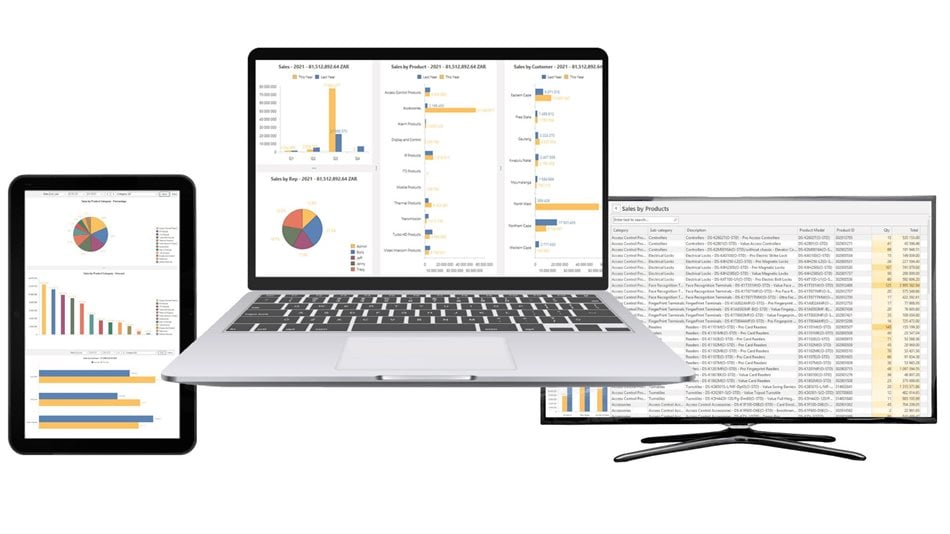For this reason, it's critical for manufacturers to conduct thorough risk assessments and implement risk management strategies to protect their operations and assets. In this article, we'll explore why software and system risk assessment and management are essential for manufacturers, the benefits of risk management, how to conduct a risk assessment, and how to mitigate risk using an ERP solution like Quickeasy BOS.
“Surviving and thriving requires keen recognition and response to change. A manufacturer’s risk assessment practices should incorporate agility and flexibility, so the company can recognise and respond to risks that were not evident a year or two earlier.” - Deloitte
Design & ManufacturingAnton Oosthuizen, QuickEasy Software 6 Feb 2023
Why system risk assessment is important
Manufacturing companies operate in a dynamic and rapidly changing environment, with new technologies emerging regularly. As such, it's essential to assess and manage the risks associated with these technologies and systems continually.
Fragmented technology
As new apps and software become available, they are gradually added and patched into the operations cycle. While each app brings its unique benefits, not many are designed to seamlessly communicate company data between itself and other apps.
For example, using a separate accounting system to your manufacturing platform could open up the business to risk, errors, time delays, duplicate work, and confusion. Ideally, accounting, manufacturing, and back office systems should be integrated into the ERP system.
Software and system failures can result in lost productivity, revenue, and damage to the company's reputation. Furthermore, in today's digital age, cybersecurity threats are a constant concern. A single cyber-attack can cause a significant impact on the business, ranging from financial losses to stolen intellectual property.
Outdated technology
In many instances, manufacturers have a system that was custom-built for them a few decades back when ERP systems were in their infancy. Slow, temperamental, laborious, difficult to maintain and update, these systems prefer to work in isolation and often lack the agility needed in modern business to interface with other essential systems.
Or, even more concerning, manufacturers may use spreadsheets and other manual, non-communicative systems to run their business.
This exposes the company to significant risk from human error, time-wasting processes, and lack of clarity.
Lack of process control
Sometimes the organisation has all the latest tech, integrations, and systems in place. However, processes and workflows are not set up with risk management in mind.
Without accurate setups, backups, documentation, workflow and process controls in place, the organisation could be exposed to significant risk.
The benefits of risk management
Effective risk management strategies can help manufacturers to identify potential risks and take measures to prevent them from occurring.
By conducting a risk assessment, companies can develop an understanding of their risks and develop mitigation strategies. This can include regular system updates and security patches, employee training, and more.
By implementing these strategies, manufacturers can reduce their risk exposure and minimise the impact of any potential threats. This leads to greater operational efficiency, increased productivity, and enhanced security.
Design & ManufacturingQuickEasy Software 17 Oct 2022
How to carry out a risk assessment
A risk assessment involves identifying potential threats, assessing their likelihood and impact, and developing a mitigation plan.
- Systems inventory. The first step is to identify the assets and systems that are critical to the manufacturing process, including hardware, software, and data. This involves conducting a thorough inventory of all systems, including those used by third-party vendors.
- Threat analysis. Once the inventory is complete, the next step is to identify potential threats, such as hardware failures, software vulnerabilities, and cyber-attacks. The likelihood and impact of each threat are then assessed, and a risk score is assigned.
- Impact analysis. Once you've identified potential risks, the next step is to assess their likelihood and impact. If you use an ERP system like QuickEasy BOS then it includes powerful analytics tools that enable you to evaluate risks based on various scenarios. By simulating different scenarios, you can gain a better understanding of the potential impact of each risk and prioritise your risk mitigation efforts accordingly.
- Risk management plan. Once the risk assessment is complete, manufacturers can develop a mitigation plan that outlines the steps necessary to reduce or eliminate the identified risks. This includes implementing measures to prevent cyber-attacks, such as firewalls and antivirus software, regular data backups, workflow checks, employee training, and more. By regularly reviewing and updating the mitigation plan, manufacturers can stay ahead of emerging threats and reduce their risk exposure continually.

How ERP helps assess, manage, and mitigate risk
Enterprise Resource Planning (ERP) software like Quickeasy BOS can be an essential tool for manufacturers looking to mitigate risk.
Automation and standardisation
First and foremost, an ERP system allows for the standardisation of work processes. By automating repetitive tasks and providing a clear roadmap for employees to follow, an ERP system minimises the chances of human error and ensures that procedures are consistently followed. This, in turn, reduces the risk of mistakes that could lead to costly errors.
Closes the gaps
ERP systems integrate all aspects of a manufacturing operation, including inventory management, production scheduling, and financial management. By consolidating all of these functions into a single system, ERP software can help manufacturers to streamline their processes, reduce errors, and enhance their overall efficiency.
Checklists and audits
QuickEasy BOS has strong functionality that minimises transactional risk through a checklist or approval system.
This system ensures that all necessary steps are taken before a transaction is completed. It provides a clear audit trail and helps to mitigate the risk of fraud or other unethical behaviour.
Essentially, users need to literally ‘tick all the boxes’ before they can proceed to the next step. This could be to ensure currency on the purchase order matches the supplier's currency, or that the product prices are not more than 5% higher than on previous purchase orders.
You can also add manual checks for users to confirm that the item purchased matches the engineering specification.
In doing so, the ERP system itself has checks and balances in place that significantly reduce risk.
Analyses data
Our ERP system allows you to easily track and analyse data across all areas of your operations, including finance, inventory, production, and sales. By having real-time visibility into your business processes, you can quickly identify potential risks and take proactive steps to mitigate them before they become major issues.
Tracks discrepancies
Furthermore, QuickEasy BOS has the capability to find discrepancies in master data such as customers, suppliers, items, and more. By identifying inconsistencies in this data, you can quickly take corrective action and avoid any potential negative impacts on your business.
Transactional clarity
In addition, our ERP system enables you to closely monitor transactions, allowing you to spot any irregularities or suspicious activity. This feature is particularly valuable for businesses that handle sensitive financial information or deal with large volumes of transactions. By having a clear picture of your financial data, you can easily identify potential issues before they become major problems.
User access control
Furthermore, ERP software can also help manufacturers to mitigate risk by providing enhanced data security and privacy features. Quickeasy BOS, for example, offers robust access control features, user authentication, and encryption to protect sensitive data.
Risk management consulting
QuickEasy not only provides customised ERP solutions that in and of itself reduce risk, the consultants are experienced in implementing risk management processes.
- Check setups with clients to identify potential weaknesses or oversights
- Ensure backups are running
- Setup work processes for documented processes
- Train staff and new team members on new functionality
- Integrate existing or new systems with the ERP to create a closed loop
HR Tools & SoftwareAnton Oosthuizen, QuickEasy Software 10 Jun 2022
Is once a year enough for risk assessments?
The short answer: no. Risk assessment and management should become part of the daily operations rather than a periodic project. By utilising available technology and data analytics tools, manufacturers can gain better insight into potential risks and respond quickly.
Mitigating risks often requires changes to your work processes, and that's where our ERP system and our consultants really shine. With QuickEasy BOS Software, you can easily customise workflows and automate processes to reduce the likelihood of errors and improve efficiency. By streamlining your operations and reducing the risk of manual errors, you can minimise the likelihood of disruptions and costly mistakes.
Final thoughts
A company's culture of risk management makes identifying and addressing vulnerabilities part of everyday operations. Challenge the existing processes, systems, and workflows to assess if there is a more efficient way to assess risk and enhance the risk management.
Effective risk management is critical for any business, and our ERP system is designed to help you identify, assess, and mitigate risks through your work processes.
E-commerceAnton Oosthuizen, QuickEasy Software 12 Jul 2022
By standardising work processes, identifying discrepancies in master data, closely monitoring transactions, and using a checklist and approval system, you can minimise the chances of costly errors and reduce your exposure to risk.
With powerful analytics tools, customisable workflows, and advanced security features, QuickEasy BOS helps you protect your business from potential disruptions and losses. Implementing an ERP system like QuickEasy BOS is an excellent way to manage risk in your business.

